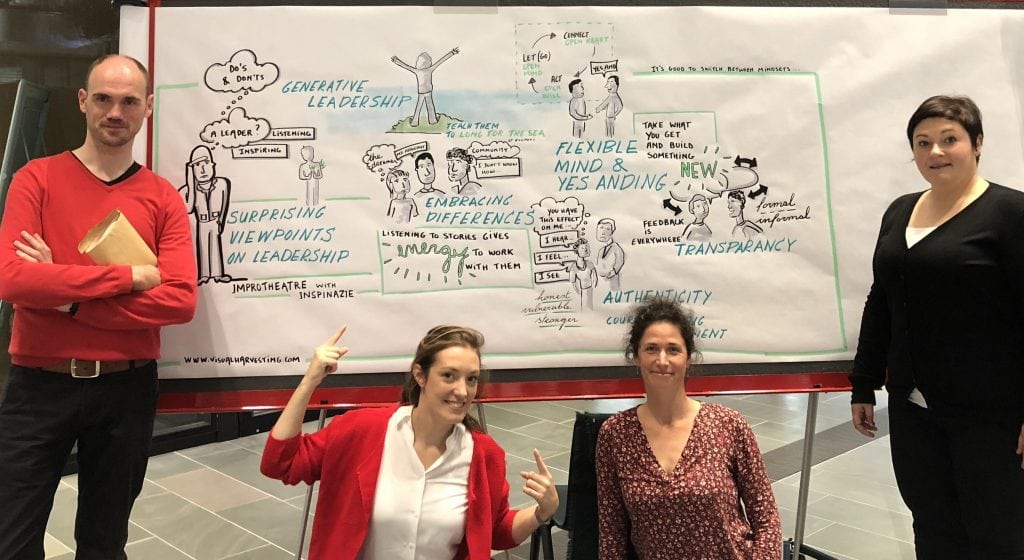Leadership in collaboration. Why is my place my place?
From how to why
With TIM, we are often asked for customization of internal meetings in organizations. For years that was typically about the values being pursued. The HOW. The latest version of the mission/vision is then put on the table. Often form data during participatory workshops. Which tells how the strategy will be rolled out for years to come. For example, with the necessary integrity. Or with a focus on mutual trust. Or full of vigor.
That still happens, and playing about values is wonderful to do and extremely relevant. Turning values from theory on paper into realistic situations makes more sense. In doing so, we invariably make sure to acknowledge and respect the human sides or clashing forces in values-driven action.
What we are seeing in applications lately is a shift from the HOW to the WHY in topics. More and more companies are emphasizing the why of their product or service in their marketing, whether or not because Simon Sinek ("People don't buy what you make, they buy why you make it.") it says. That can't really happen without organizations and the people in them also thinking for themselves about why they do what they do. This focus on self-direction, and thus personal leadership, ensures that "improvisational theater" itself is increasingly the object of illustration and research, not just a means of generating high engagement. In exploring the concept of intrinsic motivation, for example, we make the parallel between employees in an organization and actors on stage.
In the workplace
To thrive in their professional lives, it helps that employees can reflect on their personal meaning and commitment. So that they can commit to their organization with clear direction and more fuel. Or to another.
On stage
A character in a play needs direction in the same way. Delivering lines of dialogue supported with beautiful physical acting is not enough. An actor must feel through his character's motives and intentions to portray it believably.
Collaboration in leadership. I lead, you lead, she/he leads.
The improvisational theater group as an illustration

All those seeking and finding meaning no longer function so well in old hierarchical models. Increasingly, people are playing the card of more autonomous teams, of connecting and generative leadership. We as an improvisational theater company are then happy to present ourselves as an example: no director (manager), no long rehearsal (project) before the performance (delivery). We actually realize the limit of short sprints in the agilework: after all, creation and performance coincide completely in improvisational theater. And we emphasize in the interpretation of those scenes that are about ourselves, our own beliefs of what it takes to really make this happen.
Beware of the slippery floor
Because before you know it, you slip. Even as an improv company. After all, the temptation is great to get stuck at the intellectual level. To run past yourself and others in a sea of ideas or to get stuck. Cooperation in a self-managing team can then quickly degenerate into a mess of both clashing and anxiously fleeing egos. Or into toxic waters because the positions people take, which are inevitable, are kept hidden and therefore any healthy dynamics of the status game get in the way.
Leadership in collaboration means that everyone, in his or her own way, contributes to the direction, and this in constant dialogue. This requires people to connect with each other. From head to heart.
The improvisation cycle

To make all that more tangible, we distinguish three phases in a cycle. You can see these phases over the whole of, say, a change in the functioning of a team or when taking on a new task. But equally at the micro level between each rejoinder within a diaologue between two people.
- Letting go of control and judgmental thinking. Giving way to fresh curiosity about what is coming at you. Really listening in the process.
- Connecting. Both with yourself (hello emotion, hello self-will...) and with the other. Making yourself vulnerable and receptive. Daring to let go of any form of cynicism. Build trust. This is the delaying step to connect well with reality.
- Jump. Getting started. The more one dared to slow down in the previous step, the greater the acceleration with which the action can take place. With at the helm whoever is most appropriate to steer at that moment. We do not believe in everyone being a little leader. We do believe in leading very strongly and following very hard. And in role fluidity.
And meanwhile continue to observe, remain attentive and alert. (Zombies cannot improvise.)
So that it becomes a cycle. The improvisation cycle.


> Discover even more typical organizational themes that Inspinazie Nue plays on
> For those who fear that we believe you should improvise anytime, anywhere. No way.

